Not every representative of the fairer sex can boast long nails, but there are practically no women who would not dream of beautiful nails. Today, there are many methods for nail extension with various materials. If you used to mainly use acrylic or gel, then recently more and more often masters prefer to use biogel. What is this material, what tools will be needed in the work, and what methods of nail extension with biogel exist, let's figure it out.
Material Features
Biogel is a material created on the basis of rubber and proteins. It is characterized by increased elasticity. At first glance, this material is not much different from ordinary gel, but biogel has several advantages.
- Its composition is close to the composition of the nail plate, so it is rarely torn away, forming a single whole with the nail.
- The material is more durable than regular gel. It is flexible, it is not affected by temperature changes and shocks. It is less prone to chips.
- Biogel allows you to immediately build an extended nail, minimizing filing.
- During correction, the biogel does not have to be sawed off; it can be dissolved in a special liquid, thereby reducing the negative effect of milling cutters on the nail plate.
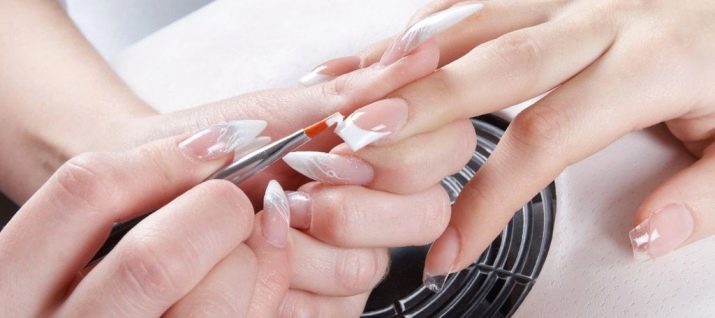
But this material has significant disadvantages. Biogel is very sensitive to chemicals, therefore it is recommended to use gloves when cleaning at home and washing dishes. Biogel is also a water-permeable material, therefore, a long stay of nails in a liquid is not recommended, since the composition can soften and deform.
Many masters of the nail industry argue that biogel does not have a harmful effect on the nail plate, unlike the same gel. But it is not so.
Despite the fact that the biogel does not really contain a number of aggressive substances such as benzene, the material also does not give oxygen access to the epithelium, so the nail plate deforms and becomes thinner over time.

Kinds
Biogel is available in several forms. They can be divided by color and features.
By color biogel is of the following types.
- Transparent. Used as a base for manicure, does not give any color. It is also used to strengthen the nail plate.
- Camouflage. It has natural shades that can be matched to skin color. It is used as the main coating for various designs.
- Color. The palette here is quite diverse. A feature of this biogel is that due to the color pigment included in the composition, the drying time of the material increases.
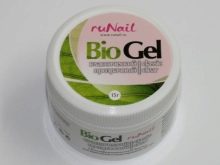
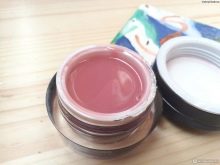
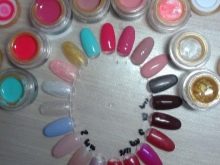
If we talk about the features, here we can distinguish other subspecies of the material.
- Sculptural. The composition includes silk extract, which allows you to immediately combine two qualities in the material: strength and elasticity.
- Royal Sealer. A colored or colorless biogel that, when dried, gives an excellent flare. It can be used as a topcoat.
- S-coating. Perfectly strengthens the nail plate. Best suited for building long forms. It does not require finishing fastening.
- UV biogel. Indispensable for the summer, as it has a UV filter and protects the nail plate from the negative effects of sunlight.
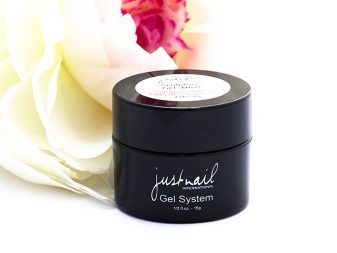
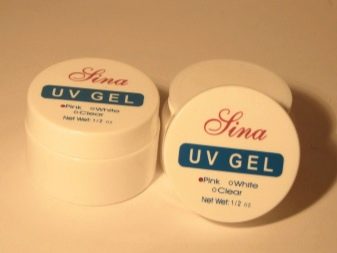
Instruments
For nail extension with biogel, except for himself, You will need the following tools and materials.
- Nail files with abrasiveness 220-240 grit for natural nails, and 150-180 grit for sawdust biogel.
- Degreaser. You can buy a special tool in the store or use 90% alcohol.
- Acid free primer. This is a kind of primer that not only removes moisture from the nail, but also raises the scales, making the surface rough, which increases the adhesion between the coating and the nail plate.
- Finish. A fixing layer that protects the biogel from the negative effects of the environment.
- Paper forms for building.
- Lamp for drying.
- Straight flat brush made of synthetic fibers.
- Orange sticks, pusher.
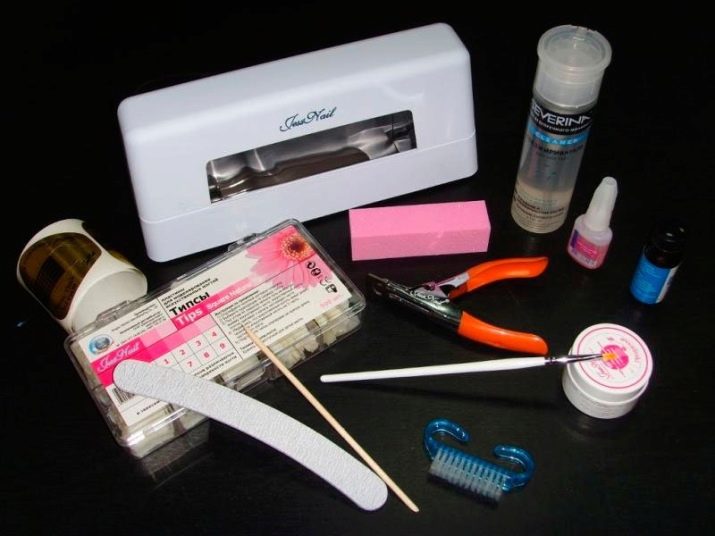
The method and technology of building
When building nails with biogel initially need to do a manicure:
- to qualitatively remove pterygium;
- move the cuticle;
- give the nail plate the necessary shape;
- remove with buff in 220-240 grit the top layer of the nail, lifting the scales up.

After these manipulations, it is necessary to remove dust from the fingers with a dry brush, degrease the nail plate and apply a primer. Next, we move on to the build-up.
- Set the shape so that it is an extension of the nail. There should be no voids between the paper and the nail, if the form does not fit snugly, we cut it with scissors.
- Then you need to design the length of the nail. To do this, apply biogel on the form itself close to the nail plate. We build the future length of the nails. To make them all the same, you should focus on the lines of the form. After you have placed the biogel, allow a few seconds for the composition to self-level and fix the material in the lamp. If your device is a UV lamp, the drying time is 2 minutes, if it is hybrid or LED, then 30 seconds is enough for drying.

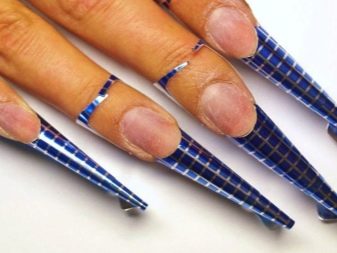
- Next, apply a drop of biogel in the middle of the nail, moisten the brush in a degreaser and pull a thin layer to the cuticle, nullifying it. The rest of the composition is distributed over the nail, pulling up on the form with a second layer. If the material fell under the cuticle or side rollers, carefully remove it with an orange stick. Again let the biogel level, dry.
- Apply the third layer in the same way as the second. Dry too.
- Remove the form.
- Using a file with abrasiveness 180 grit. If the layer on the nail is uneven, file it with a buff.
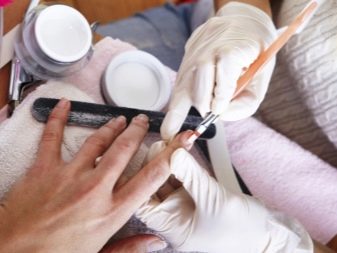

Now you can design on your nails using gel polish. If you used a camouflage biogel, then you are allowed to simply cover the surface with a top, sealing the ends of the nail. Using color biogel, you can build up nails, immediately performing the design. In this way it is easy to make a French manicure.
There are really two ways to reproduce such an idea.
- First, grow the nail in the usual way, as described above. An additional layer to draw a "smile" as is usually done with gel polish. Cover with a top.
- Immediately apply a white biogel to the free edge of the nail, drawing a “smile” in each layer. This method is more time-consuming, but as a result, the thickness of the nail will be closer to natural.
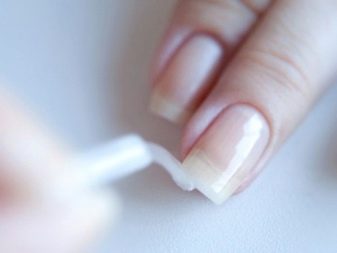
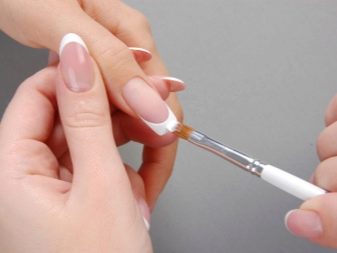
Reviews
Biogel is quite widely used in the nail industry, but reviews on nail extensions with this material can be found various.
Some, having tried it, talk about the quality of the product, about the possibility of extending the “life” of manicure, that even a beginner can build nails with this material.
Others claim that such material cracks after two weeks, the nails become brittle, and manicure using biogel is quite expensive. It must be remembered that not all material is of the same quality, and when choosing a biogel, it is better to give preference to well-known brands, and not to buy a cheap product of low grade.
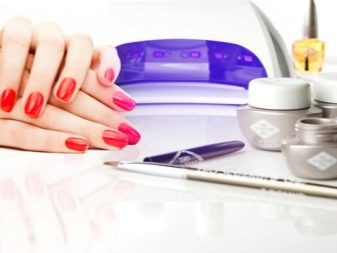
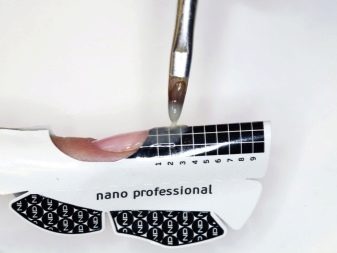
You will learn more about biogel nail extensions in the next video.










